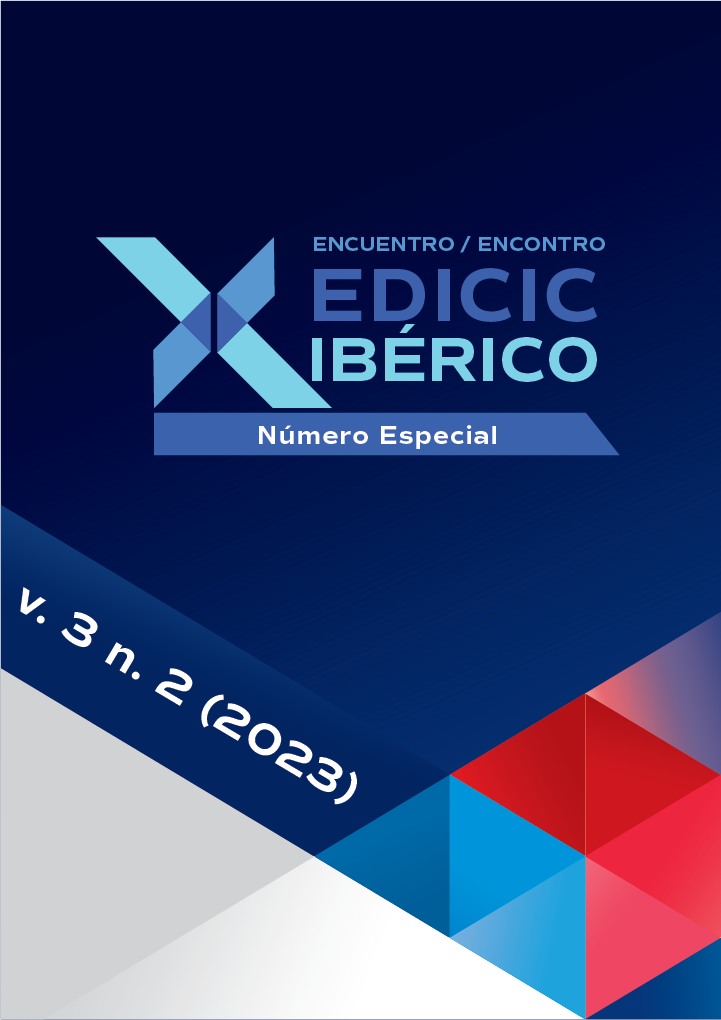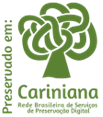Representation of animal sound information: an analysis of the phononoteca neotropical Jacques Vielliard - Brazil
DOI:
https://doi.org/10.62758/re.v3i2.258Keywords:
Information Representation, Phononoteca Neotropical Jacques Vielliard, Sound Communication, Ornithology, BirdsAbstract
The study demonstrates the potential of acoustic communication as a resource that is currently being widely used to monitor biodiversity and identify species. To do this, methods are used to measure the abundance and life cycle of fauna by observing the acoustic repertoire emitted by each specimen or population. In this way, it is understood that the study of sound is a significant context, especially as a tool for contributing to research into the ecology and sound patterns of birds. Consequently, it is understood that the construction and use of collections containing vocal information on birds in sound archives or audio library, becomes an interesting object of research, since their applications interact between the fields of ornithology and bioacoustics. This raises the question of how bird acoustic information is represented in sound collections. To this end, the aim of this research is to: analyze the Phononoteca Neotropical Jacques Vielliard, in order to observe the availability of data that can help in the search for information on animal sound communication; verify how information on the acoustic parameters of bird sound communication is represented in the audio library. The methodology used in this study is exploratory research of a strictly theoretical and descriptive nature and is qualitative and documentary in nature. Using qualitative analysis to carry out this research will mainly contribute to the expansion of future studies aimed at filling gaps in the field of bioacoustics and Archivology present in animal sound collections. Information Science has been considered an important tool for researchers, both by using information technology to manage, collect and distribute knowledge about birds, and through detailed research into the vocalization of avifauna, providing a basis for audio library and bird databases around the world, as well as providing knowledge about the geographical distribution and behavioral characteristics of birds.
References
Academia brasileira de Ciências (2023). Jacques Marie Edme Vielliard. http://www.abc.org.br/membro/jacques-marie-edme-vielliard/.
Alvarenga, L. (2003). Representação do conhecimento na perspectiva da Ciência da Informação em tempo e espaço digitais. Encontros Bibli: revista eletrônica de biblioteconomia e Ciência da Informação, (15). DOI: https://doi.org/10.5007/1518-2924.2003v8n15p18
Araújo, C. B., & Marques, P. A. M. (2022). World animal sound archives and collections: Assessment of the current global coverage. In XXIV International Bioacoustics Congress (IBAC), Pirenópolis, Brazil (Vol. 8, p. 13).
Araújo, C. B., & Silva, M. L. (2011). Obituary–Jacques ME Vielliard (1944-2010) life and legacy. Revista Brasileira de Ornitologia, 19(3), 455-459.
Barros, C. M. D., & Café, L. M. A. (2012). Estudos da semiótica na Ciência da Informação: relatos de interdisciplinaridades. Perspectivas em Ciência da Informação, 17, 18-33. DOI: https://doi.org/10.1590/S1413-99362012000300003
Billick, I., & Price, M. V. (Eds.). (2010). The ecology of place: contributions of place-based research to ecological understanding. University of Chicago Press. DOI: https://doi.org/10.7208/chicago/9780226050447.001.0001
Campos‐Cerqueira, M., & Aide, T. M. (2016). Improving distribution data of threatened species by combining acoustic monitoring and occupancy modelling. Methods in Ecology and Evolution, 7(11), 1340-1348. DOI: https://doi.org/10.1111/2041-210X.12599
Catchpole, C. K., & Slater, P. J. (2003). Bird song: biological themes and variations. Cambridge university press.
Cunha, A. A., & Guedes, F. B. (Eds.). (2013). Mapeamentos para a conservação e recuperação da biodiversidade na Mata Atlântica: em busca de uma estratégia espacial integradora para orientar ações aplicadas. Ministério do Meio Ambiente, Secretaria de Biodiversidade e Florestas, Departamento de Conservação da Biodiversidade.
FNJV - Fonoteca Neotropical Jacques Vielliard. (2023). https://www2.ib.unicamp.br/fnjv/
Freire, G. H. (2006). Ciência da informação: temática, histórias e fundamentos. Perspectivas em ciência da informação, 11(1), 6-19. DOI: https://doi.org/10.1590/S1413-99362006000100002
Gasc, A., Francomano, D., Dunning, J. B., & Pijanowski, B. C. (2017). Future directions for soundscape ecology: The importance of ornithological contributions. The Auk: Ornithological Advances, 134(1), 215-228. DOI: https://doi.org/10.1642/AUK-16-124.1
Lucio, D. R. (2016). Classificação de espécies de pássaros utilizando descritores de características visuais e acústicas (Dissertação de Mestrado, Universidade Estadual de Maringá).http://repositorio.uem.br:8080/jspui/handle/1/2500.
McVay, M. (2023, February). Noise and soundscape in Welsh planning policy. In INTER-NOISE and NOISE-CON Congress and Conference Proceedings (Vol. 265, No. 7, pp. 686-693). Institute of Noise Control Engineering. DOI: https://doi.org/10.3397/IN_2022_0094
Novellino, M. S. F. (1996). Instrumentos e metodologias de representação da informação. Informação & Informação, 1(2), 37-45. DOI: https://doi.org/10.5433/1981-8920.1996v1n2p37
Oswald, J. N., Erbe, C., Gannon, W. L., Madhusudhana, S., & Thomas, J. A. (2022). Detection and classification methods for animal sounds. Exploring Animal Behavior Through Sound, 1, 269-317. DOI: https://doi.org/10.1007/978-3-030-97540-1_8
SANTOS, A. R. D. S. (1994). Importância da vocalização na identificação das aves. Boletim, 10, 4-1994.
Sueur J, Gasc A, Grandcolas P, Pavoine S (2012) Global estimation of animal diversity using automatic acoustic sensors. In Le Galliard, J. F., Guarini, J. M., & Gaill, F. (Eds.). Sensors for ecology: towards integrated knowledge of ecosystems. CNRS Phonothe`que, Paris, pp 99–119.
Vielliard, J. M. (1987). O uso da bio-acústica na observação de aves. II encontro nac. Anilhad. Aves, 98-121.
Downloads
Published
How to Cite
Issue
Section
License
Copyright (c) 2023 Revista EDICIC

This work is licensed under a Creative Commons Attribution 4.0 International License.
The Association holds the copyright of the texts it publishes and, therefore, adopts a Creative Commons License, CC BY 4.0 DEED Attribution 4.0 International (https://creativecommons.org/
You are free to:
- Share: copy and redistribute the material in any medium or format for any purpose, even commercially.
- Adapt: remix, transform, and build upon the material for any purpose, even commercially.






